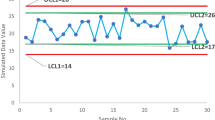Abstract
This paper revisits the problem of selecting an optimal deadlock resolution strategy, when the selection criterion is the maximization of the system throughput, and the system is Markovian in terms of its timing and routing characteristics. This problem was recently addressed in some of our previous work, that (i) provided an analytical formulation for it, (ii) introduced the notion of randomized deadlock avoidance as a generalization of the more traditional approaches of deadlock prevention/avoidance, and detection and recovery, and (iii) provided a methodology for selecting the optimal randomized deadlock avoidance policy for a given resource allocation system (RAS) configuration. An issue that remained open in the problem treatment of that past work, was whether the proposed policy randomization is essential, i.e., whether there exist any RAS configurations for which a randomized deadlock avoidance policy is superior to any other policy that does not employ randomization. The work presented in this paper establishes that for the basic problem formulation where the only concern is the (unconstrained) maximization of the system throughput—or the other typical performance objectives of minimizing the system work-in-process and mean sojourn time—randomization of the deadlock resolution strategy is not essential. However, it is also shown that, sometimes, it can offer an effective mechanism for accommodating additional operational constraints, like the requirement for production according to a specified product mix. Furthermore, the undertaken analysis provides an analytical characterization of the dependence of the aforementioned performance measures on the transition rates relating to the various events of the underlying state space, which can be useful for the broader problem of synthesizing efficient scheduling policies for the considered class of resource allocation systems.
Similar content being viewed by others
References
Cassandras, C. G., and Lafortune, S. 1999. Introduction to Discrete Event Systems. Boston, MA: Kluwer Academic Publishers.
Choi, J. Y., and Reveliotis, S. A. 2003. A generalized stochastic peth net model for performance analysis and control of capacitated re-entrant lines. IEEE Trans. on Robotics and Autonzation. 19: 474—480.
Nahmias, S. 1997. Production and Operations Analysis. 3rd edition, Chicago, IL: Irwin.
Reveliotis. S. A. 2000a. An analytical investigation of the deadlock avoidance vs. detection and recovery problem in buffer-space allocation of flexibly automated production systems. IEEE Trans. on SMC: Part B — Special Issue on Discrete System Control 30: 799—811.
Reveliotis, S. A. 2000b. Selecting the optimal deadlock resolution strategy in buffer space allocation of flexibly automated production systems—an analytical perspective. In WODES 2000, IEE, 181—192.
Reveliotis, S. A., and Ferreira, P. M. 1996. Deadlock avoidance policies for automated manufacturing cells. IEEE Trans. on Robotics & Automation 12: 845—857.
Strang, G. 1988. Linear Algebra and its Applications, 3rd edition. Harcourt College Publications.
Author information
Authors and Affiliations
Rights and permissions
About this article
Cite this article
Reveliotis, S.A., Choi, J.Y. On the Optimality of Randomized Deadlock Avoidance Policies. Discrete Event Dynamic Systems 13, 303–320 (2003). https://doi.org/10.1023/A:1025675515166
Issue Date:
DOI: https://doi.org/10.1023/A:1025675515166




